All products featured are independently chosen by us. However, SoundGuys may receive a commission on orders placed through its retail links. See our ethics statement.
The best headphones for battery life in 2025
September 15, 2025

Wireless headphones and earbuds are a staple of modern living in 2025. As such, the market is awash with excellent picks for audiophiles, gamers, and workout enthusiasts. Brands like Sennheiser, Sony, and Nothing are among industry leaders and offer some of the best flagship features that money can buy. To that end, wireless headphones are no longer reserved for listening to music. Instead, some of the best headphones for battery life serve as trusty companions in the workplace, on commutes, and for local and remote leisure activities.
We’ve tested hundreds of wireless headphones and over 300 earbuds here in the SoundGuys lab. Consequently, each of our recommendations in this list is backed by objective testing data gathered under controlled conditions. While it remains unfeasible to test every headphone on the market, we hope this list is comprehensive enough to help you make an informed decision when considering your next purchase.
The Quick Answer
For a quick guide to the best headphones for battery life that suit your needs and budget, check out our top picks below. Each has a link to our full review.
The best overall:
The best for gamers:
The best earbuds:
The best for ANC:
The best budget:
The best IP-rated:
The best flagship:
Best headphones for battery life overall: Sennheiser MOMENTUM 4 Wireless
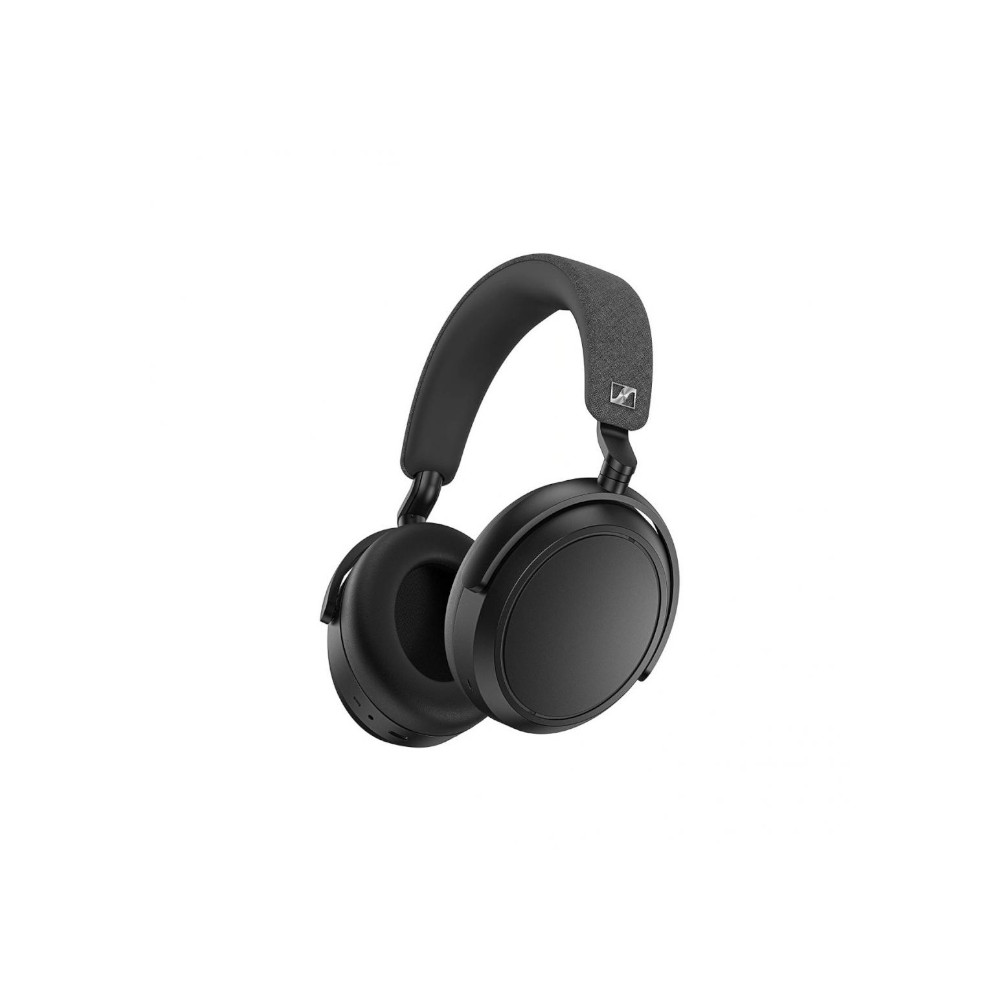
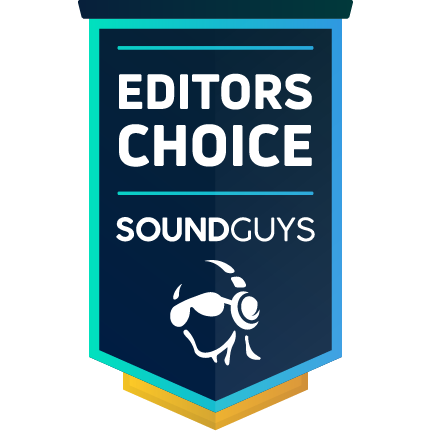
The Sennheiser MOMENTUM 4 Wireless are the clear winner if you desire headphones with outstanding battery life and all-around decent features. In our testing, the MOMENTUM 4 provided 56 hours and 21 minutes of playback time, peaking at 75dB(SPL) with ANC enabled. This is significantly longer than most other wireless over-ear headphones that we’ve reviewed. For example, the Sony WH-1000XM5 lasted approximately 31 hours in our testing. Likewise, the Sony WH-XB910N managed roughly 37 hours before running out of power. If you travel often and don’t want to think about charging, the MOMENTUM 4 give you more freedom than almost anything else on the market.
Sound quality is another of the headphones’ biggest strengths. The frequency response tracks our target preference curve between 20Hz and 20kHz, with a subtle emphasis in the bass below 100Hz. As such, you shouldn’t have any trouble hearing auditory details like vocals, guitars, and synth lines. When subjected to our panel or virtual listeners modeled by the MDAQS algorithm, the MOMENTUM 4 scored 4.6 out of 5 overall, which is very good. However, tinkerers will appreciate Sennheiser’s Smart Control app, which lets you fine-tune the EQ to your liking. Whether listening to acoustic tracks or bass-heavy electronic music, the MOMENTUM 4 handle it consistently.
Industry-leading battery life, excellent sound quality, and a comprehensive app elevate the Sennheiser MOMENTUM 4 Wireless above the competition.
Comfort is another reason these headphones stand out. Their reasonably lightweight 290g frame and plush ear pads make it easy to wear them through long work sessions without fatigue, even while wearing glasses. Connectivity is equally flexible — you can use Bluetooth with aptX Adaptive, plug in a TRS analog jack, and even listen over USB-C. Features like Smart Pause, customizable ANC, and intuitive touch controls add convenience to daily usage, making them a strong all-rounder.
The only drawback these cans have are mediocre ANC and in-call noise rejection performance. While the latter works well for street noise, competitors like the Sony WH-1000XM6 do a much better job of attenuating wind noise and reverberance. If your top priority is world-class noise cancelling, you may want to look elsewhere. However, for most people, the combination of industry-leading battery life, excellent sound, and easy-to-achieve comfort makes the Sennheiser MOMENTUM 4 Wireless the best overall choice.
Read our full Sennheiser MOMENTUM 4 Wireless review
Best headphones for battery life and gaming: HyperX Cloud Alpha Wireless

HyperX claims its Cloud Alpha Wireless headset lasts 300 hours, but we measured even more. In our testing, the HyperX Cloud Alpha Wireless lasted an astonishing 327 hours and 27 minutes, with continuous music playback peaking at 75dB(SPL). This absolutely shattered our expectations and made a mockery of the immediate competition. Endurance like this will be admired by gamers who often forget to plug in their gear or enjoy marathon gaming sessions.
The headset’s sound quality is also perfect for cinematic gaming. For example, the bass response below 200Hz is elevated, which adds a satisfying impact to explosions and low-frequency in-game effects. While this can mask the sound of approaching footsteps and voices, the mids and highs remain clear enough in most situations. The durable metal exterior, large cushioned ear cups, and balanced headband make the headset comfortable for multi-hour gaming sessions without feeling weighed down or overheated.
With over 327 hours of listening time, the HyperX Cloud Alpha Wireless are by far the best gaming headphones for battery life on the market.
The wireless performance is solid thanks to the included USB-A wireless RF dongle. Similarly, the detachable mic makes it easy to swap between gaming and casual listening. HyperX’s NGenuity software is fairly basic, but it offers a functional EQ and spatial sound support for those who want more customization. Combined, these features make the Cloud Alpha Wireless a reliable, no-fuss option for gamers who want performance and convenience without babysitting their battery.
That said, the headset isn’t flawless. There’s no wired fallback or Bluetooth option, which means you’re tied to the USB dongle, limiting compatibility with some devices. While the detachable mic is fine for in-game communication, it doesn’t compete with dedicated streaming microphones for those needing broadcast-quality sound. If you can live with those limitations, the Cloud Alpha Wireless remains the best choice for gamers needing unmatched battery life, ample comfort, and decent sound quality.
Read our full HyperX Cloud Alpha Wireless review
Best earbuds for battery life: Fairphone Fairbuds

It’s worth pointing out that the Fairphone Fairbuds do not last the longest between charges in the traditional sense. For example, their 6 hours and 34 minutes of continuous playback time falls behind the Sony WF-1000XM5’s 9 hours and 32 minutes. However, what sets the buds apart is that, unlike most TWS earbuds, you can replace the internal battery cells of the buds and case. So, when the time comes that the cells start losing capacity, you don’t have to toss the buds in the trash. Instead, you can maintain them by replacing the included LIR1054 hearing aid batteries, which massively extends their usable life.
This repairability makes them especially compelling for anyone who values sustainability or hates waste. In building the Fairbuds, Fairphone provides access to components such as the battery panels, PCBs, and charging case connectors with standard tools and parts. This design encourages you to keep the earbuds alive and working far longer than many equivalents, which often become useless once the non-serviceable batteries degrade. It’s rare to see this level of maintainability in earbuds, and many will appreciate that even if performance declines slowly, the product doesn’t become obsolete when one part fails.
Replaceable batteries are a standout feature of the Fairphone Fairbuds.
However, there are trade-offs. For starters, the Fairbuds’ sound quality is somewhat mediocre. Our MDAQS tests reveal that the buds’ timbre, immersion, and distortion scores all came in below what many would consider “very good” for the price. For example, high frequencies trail off more than most people will enjoy. This makes music sound muted or dull compared to earbuds with a more extended treble response. If you’re someone who notices subtleties in music, especially in vocals or acoustic instruments, or compares often against higher-end models, these flaws will likely be frustrating. Features are kept minimal: there’s no Bluetooth Multipoint support, the app is basic, and Bluetooth connection quality sometimes shows drop-outs.
So, they may not satisfy audiophiles or those who demand the best sound and connectivity options. However, for buyers who value battery life above all else — not just the hours per charge, but the years before the product becomes unusable — the Fairbuds offer a unique proposition. If you desire a long-lasting product that you can repair instead of replace, these are one of the best choices on the market.
Read our full Fairphone Fairbuds review
Best headphones for battery life and ANC: JBL Tour ONE M3
The JBL Tour ONE M3 deliver battery life that nearly sets a new benchmark among wireless ANC over-ear headphones. In our testing, we measured 55 hours and 37 minutes of continuous playback at 75 dB(SPL) with ANC enabled. That places them just behind the Sennheiser MOMENTUM 4 Wireless. However, they’re leaps ahead of heavyweights like the Sony WH-1000XM5 and Bose QuietComfort Ultra. For anyone who flies long haul, commutes for hours, or dislikes constantly recharging, this kind of stamina means serious peace of mind.
Equally impressive is how well the Tour ONE M3 silence the world around you. Their ANC capabilities are among the best we’ve measured in the lab. This consistently cancels around 30 dB of sound under 1kHz and isolates higher frequencies by as much as 51dB. The combination of 8 microphones, windscreens, and top-tier signal processing pays off, particularly when attenuating low rumbles and street noise. In loud cafés or at the office, the Tour ONE M3 block enough noise to take conference calls in a cinch.
With up to 51dB of attenuation, the JBL Tour ONE M3 are some of the best noise canceling headphones with excellent battery life.
JBL provides a built-in DAC for streaming lossless audio via USB-C or with an analog input. Likewise, the Tour ONE M3 support LDAC, LC3, and Auracast connectivity. Their SMART Tx transmitter brick is also handy for wireless source flexibility. Comfort is solid too: padded ear cups, faux-leather cushioning, and a lightweight plastic build make them wearable for long sessions. However, their headband may feel large on smaller heads, and their default sound profile will not please everyone. For example, you will likely want to tune the mids and treble to your liking with the in-app EQ. Likewise, while the SMART Tx accessory is clever, it’s another thing to charge and potentially misplace. The JBL Tour ONE M3 are also reasonably expensive and larger than some users will like.
Still, if you want headphones that deliver both virtually unmatched battery life and genuinely high-end ANC, the JBL Tour ONE M3 hit the sweet spot. Their feature breadth, sound flexibility, and extended usage make them a future-friendly investment. For those who prefer perfect sound out of the box, ultra-compactness, or minimal gear, and who are more critical than raw endurance, there may still be better fits. Nevertheless, our tests show that few models combine this level of battery life and noise cancellation so well.
Read our full JBL Tour ONE M3 review
Best headphones for battery life and budget: Sennheiser ACCENTUM Wireless


For the price, the Sennheiser ACCENTUM Wireless offer seriously competitive battery life. The company claims the headphones last up to 50 hours when subjected to continuous playback with ANC enabled. While we couldn’t quite replicate this in the lab (we managed 46 hours and 40 minutes in our testing), this still exceeds the battery life of similarly-priced rivals. For anyone on a budget tired of daily charging, the ACCENTUM Wireless offer a lot of listening time between outlets.
You also get solid performance for sub-$150. For example, the sound quality is decent, with a slight emphasis in the bass below 100Hz. The treble detail is a little recessed, but this can be rectified using the companion app’s 5-band EQ and presets. The build quality and attainable comfort feel good, too. There are ample plush ear cushions, a reasonably tight fit, and a lightweight frame that’s evenly distributed.
Few other headphones deliver as good battery life as the Sennheiser ACCENTUM Wireless for the price.
The good ear cup design and noise cancellation capabilities of the ACCENTUM Wireless work well in many everyday situations. For example, they handle mid-to-high frequency background noises (like those often heard in offices) reasonably well, blocking out 30-40dB above 1kHz. This equates to a roughly 90% drop in loudness. However, under 1kHz, the ANC cancels about 15-20dB of noise, which is noticeably less than leading brands. The microphone performance is okay, too, but not class-leading — you’ll want to shelter from the wind during important calls.
The Sennheiser ACCENTUM Wireless connect to Bluetooth devices via the SBC, AAC, aptX, and aptX HD codecs. Unfortunately, they do not support analog audio with a 3.5mm jack. This matters if you often use wired connections or desire ultra-low-latency audio. This compromise, along with middling ANC performance, might dissuade some listeners from the ACCENTUM Wireless. If you want top-tier noise canceling or demand the most detailed treble and mic clarity, you’ll likely prefer something else on this list. For many users, though, the trade-offs are very reasonable given what you get.
Read our full Sennheiser ACCENTUM Wireless review
Best headphones for battery life and water resistance: Nothing Headphone (1)


The Nothing Headphone (1) have taken the industry by storm since their launch on July 1, 2025. With ANC enabled, you can expect the headphones to last 42 hours and 53 minutes with continuous music playback. However, switching off ANC unlocks a lifespan of nearly 80 hours. Such battery life should mean the cans will endure days, if not a whole week, of commuting, work, and leisure. When you’re in a pinch, you can fast charge them for five minutes to receive five hours of playback time. This beats competitors, such as the Bose QuietComfort Ultra, which deliver two and a half hours from a 15-minute top-up.
Water resistance is another attribute that will impress casual listeners and workout enthusiasts. The Nothing Headphone (1) have an IP52-rated exterior. This means they can handle sweat and light moisture around the ears without suffering damage. This adds a layer of confidence for anyone who uses headphones outside or at the gym. Combined with strong ANC performance, the Nothing Headphone (1) are a compelling choice for long commutes in the rain and offer a sleek finish.
The Nothing Headphone (1)'s IP52 rating is a rare feature among over-ear wireless headphones.
Many features besides battery and durability amplify their appeal. I particularly like the physical volume dial, paddle, and multifunction button rather than delicate touch panels. While the volume paddle works less well for those with longer hair, it avoids accidental taps and provides more reliable feedback in most cases. The updated Nothing X app also offers a detailed 8-band parametric EQ and spatial audio with head tracking. You can connect to your source device with USB-C audio, a 3.5mm jack, and Bluetooth 5.3 with LDAC. Those with smaller heads will find the headphones comfortable. This is thanks to the memory foam pads, padded headband, and decent clamping force.
That said, they’re not perfect for everyone. For example, the default sound profile leans darker, with mids and treble sounding underemphasized out of the box. You’ll likely have to spend some time in the EQ to correct the sound profile of the Nothing Headphone (1). The cans are also bulky and cannot fold flat, making them less suitable for stowing away in a backpack. The striking, semi-transparent panels with square ear cups are also not for everyone. For example, some will think the headphones are eye-catching, while others may prefer something more understated.
Read our full Nothing Headphone (1) review
Best headphones for battery life and flagship features: Sony WH-1000XM6


The Sony WH-1000XM6 are among the most compelling headphones on the market for premium battery life and flagship features. With over 37 hours of continuous playback time, they outperform many competitors. This includes the Apple AirPods Max, which offer just 20 hours of playtime. They also last over five hours longer than their predecessor, the Sony WH-1000XM5. This extended battery life is ideal for long-haul flights, extended commutes, or intensive workdays without the need for frequent recharging.
Beyond battery performance, the WH-1000XM6 excel in sound quality, ANC, and microphone clarity. The headphones feature an improved microphone array trained with AI to quell environmental sounds while taking calls. This ensures that your voice remains clear at the office, in a large hall, or while walking in the wind. The headphones support Bluetooth 5.3 and the LDAC codec, providing Hi-Res wireless audio. While they lack USB-C audio, analog fans can connect with a 3.5mm TRRS cable.
The Sony WH-1000XM6 have some of the best noise canceling and in-call noise rejection algorithms on the market.
Comfort-wise, the WH-1000XM6 offer a familiar design with improved usability. Sony addressed previous model complaints by implementing reinforced foldable hinges. Consequently, listeners can now fold the ear cups inward for more efficient storage. The power button has also been redesigned for easier use while wearing. The WH-1000XM6 feature a softshell case for those concerned about minor scuffs during transit.
However, some users might find the WH-1000XM6 lacking in certain areas. As mentioned, the headphones do not support USB-C audio. This could be a drawback for audiophiles seeking lossless audio over a modern wired connection. Additionally, the absence of an ingress protection rating means they are not resistant to water or dust. This limits their suitability in rugged environments. Nevertheless, despite these limitations, the WH-1000XM6 remain a top-tier choice for those prioritizing battery life and flagship features.
Read our full Sony WH-1000XM6 review
The best headphones for battery life: Notable mentions
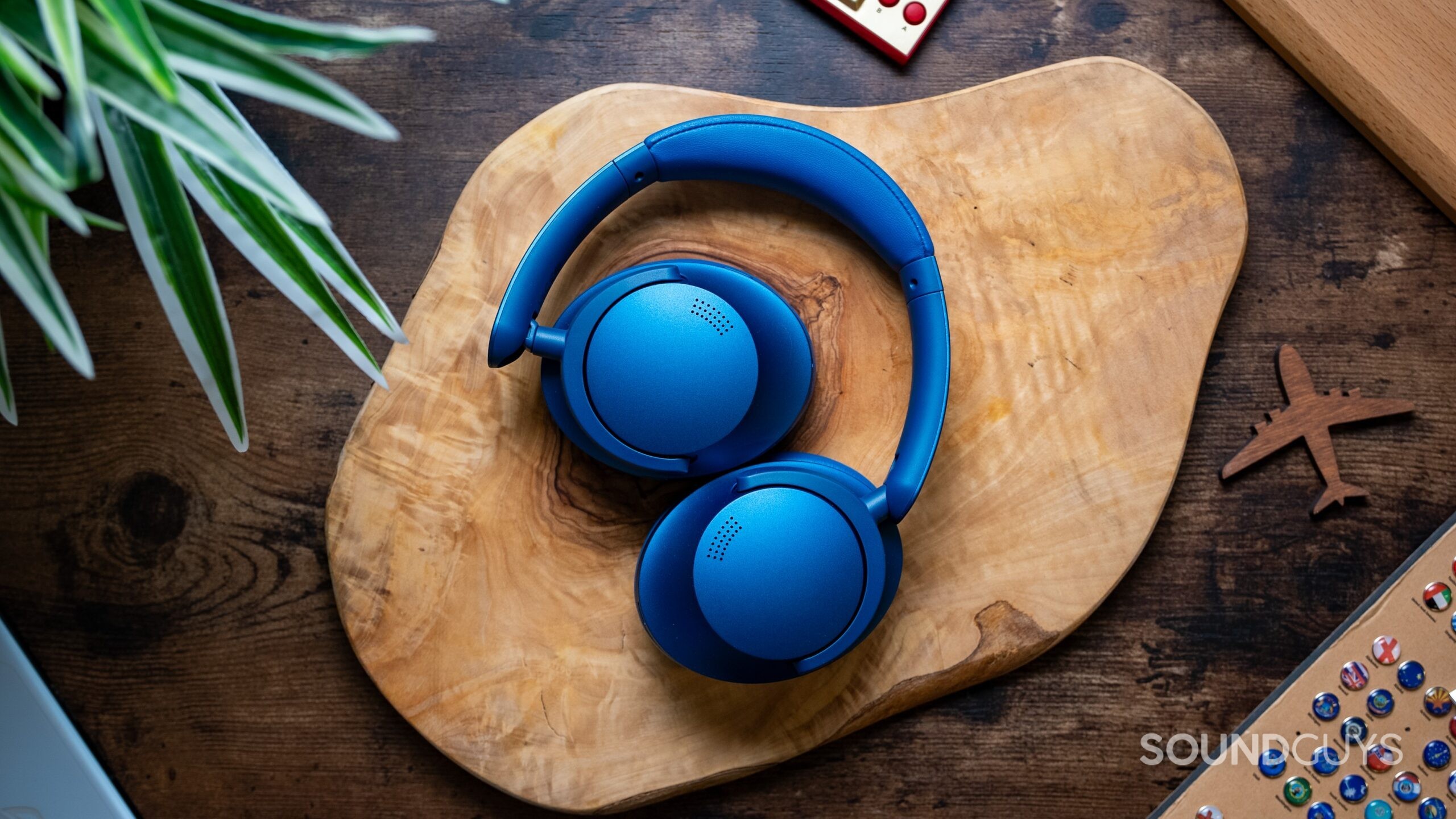
- 1MORE SonoFlow ($99.99 at Amazon): With 56 hours and 51 minutes of ANC-enabled battery life, the 1MORE SonoFlow are an excellent candidate for superior battery life at an affordable price point. They also enjoy decent sound quality and a comprehensive companion app that allows access to all their best features.
- Anker Soundcore Space Q45 ($79.99 at Amazon): For even less money, the EarFun Wave Pro provide 52 hours and 31 minutes of battery life with ANC switched on. Listeners also receive decent ANC performance, the LDAC Bluetooth codec, and a comfortable form factor.
- JBL Live 660NC ($149 at Amazon): The JBL Live 660NC last 47 hours and 8 minutes with ANC enabled and come equipped with a lightweight 268g frame, consistent noise canceling performance, and an easy-to-use design.
- Anker Soundcore Life Q30 ($79.99 at Amazon): Like many Anker headphones, the Soundcore Life Q30 have decent battery life, lasting 46 hours and 35 minutes in our standardized testing. They also provide good sound quality at an affordable price point.
- JLab JBuds Lux ANC ($79.99 at Amazon): USB-C audio and battery life that lasts 44 hours and 22 minutes are major selling points of the JLab JBuds Lux ANC. They also have decent sound quality, achieving an overall MDAQS score of 4.5 out of 5 in our testing.
- Anker Soundcore Space One ($99.99 at Amazon): The Soundcore Space One are another formidable Anker installment, lasting 42 hours and 57 minutes with ANC enabled. They are also reasonably priced, weigh just 259g, and support Bluetooth 5.3 with the LDAC codec. Their ANC performance is also good for the price.
- SteelSeries Arctis Nova 5X ($129 at Amazon): While they don’t have ANC, many gamers will appreciate the Arctis Nova 5X’s 42 hours and 10 minutes of battery life. The Arctis Nova 5 app is comprehensive, and the headset connects to virtually any device you throw at it.
- Sony WH-CH720N ($799 at Amazon): For something super lightweight with excellent battery, grab the Sony WH-CH720N. With ANC enabled, these cans provide 40 hours and 11 minutes of listening time. They also fit well, and the controls feel intuitive.
- Sony WH-XB910N ($148 at Amazon): If you like bass, the Sony WH-XB910N may be for you. Lasting 37 hours and 9 minutes per charge, the headphones boost sub-bass frequencies by over 20dB. You can also use the built-in EQ to adjust the headphones’ sound quality, and the ANC is decent, although it shows minimal attenuation in the super-low-end frequencies.
- Dell Alienware Pro Wireless Headset ($229.99 at Amazon): Gaming headsets with ANC are few and far between. Nevertheless, the Dell Alienware Pro Wireless headset reduces the perceived loudness of environmental sounds by approximately 81% and lasts roughly 35 hours per charge. They are also comfortable to wear for long periods.
- Sony ULT WEAR ($199.99 at Amazon): The Sony ULT WEAR deliver skull-rattling amounts of bass and last 32 hours and 35 minutes with ANC enabled. The cans successfully quell low incidental noises, and they scored 4 out of 5 overall in our MDAQS testing.
- Sonos Ace ($449 at Amazon): If you like streaming Dolby Atmos content with head tracking, then the Sonos Ace are an excellent choice. These cans last 32 hours and 13 minutes. They also integrate with Sonos soundbars and support aptX Lossless via Snapdragon Sound.
- Sony WH-1000XM5 ($387 at Amazon): A proven staple among over-hear noise canceling headphone fans, the Sony WH-1000XM5 remain an excellent choice across the board. In particular, they deliver 31 hours and 53 minutes of listening time, decent noise canceling, and outstanding microphone quality for taking calls.
- Focal Bathys ($699 at Amazon): Premium sound quality comes at a price, but the Focal Bathys are worth it. With a frequency response that follows our target preference curve, 31 hours and 30 minutes of playtime, and many connectivity options, it’s hard to go wrong.
- Bose QuietComfort Ultra Headphones ($429 at Amazon): The Bose QuietComfort Ultra Headphones remain a steadfast friend for many listeners thanks to their excellent ANC, Snapdragon Sound support, and pleasing sound quality. Regarding battery life, they last 27 hours and 37 minutes.
- Bose QuietComfort Headphones ($349 at Amazon): If you want more affordable Bose headphones, the QC Headphones could be a compelling option. These last 27 hours and 14 minutes on a single charge.
- SteelSeries Arctis Nova Pro Wireless ($349.99 at Amazon): Though not the longest battery life per charge, the ability to swap out the Arctis Nova Pro Wireless’s hot-swappable batteries makes them a compelling ANC gaming headset. Even still, you can expect the batteries to last 22 hours and 26 minutes before needing to switch.
- Apple AirPods Max ($499 at Amazon): By today’s standards, the AirPods Max have mediocre battery life, lasting just over 21 hours. Nevertheless, they are the best companion for those running iPhones and unlock spatial audio, automatic device pairing, and stellar ANC.
- Master & Dynamic MW09 ($349 at Amazon): The Master & Dynamic MW09 have the longest battery life of any TWS earbuds we have tested so far, lasting an incredible 15 hours and 54 minutes per charge. They are also IP54-rated to withstand the elements, have powerful noise canceling, and support the latest and greatest Bluetooth technologies.
- CMF Buds 2 ($39 at Amazon): Budget-conscious buyers will love the audio quality, ANC performance, and Bluetooth technologies the CMF Buds 2 support. They also last 10 hours and 22 minutes with ANC switched on.
- Anker Soundcore Liberty 4 NC ($99.99 at Amazon): The Anker Soundcore Liberty 4 NC have remained one of our most recommended earbuds for good reason. Packed with many of the best earbud features, like wireless charging, fast pair, and Hi-Res codecs, they also last 9 hours and 53 minutes per charge.
- Sony WF-1000XM5 ($298 at Amazon): Few buds are as good all-around as the Sony WF-1000XM5. Equipped with industry-leading ANC, excellent app support, and 9 hours and 32 minutes of battery life, Android and iOS fans can rejoice.
- Sony WF-C710N ($119.99 at Amazon): Cheaper alternatives are always compelling, and the Sony WF-C710N fit the bill. For half the price of premium earbuds, they provide decent ANC, a comfortable fit, and 9 hours and 25 minutes of listening time.
- Nothing Ear (a) ($95 at Amazon): For the price, the Nothing Ear (a) provide a robust IP54 rating, good noise canceling, excellent microphone quality, and 8 hours and 49 minutes of playback time per charge.
- JLab Epic Lab Edition ($199.99 at Amazon): If you want an introduction to Knowles balanced armature drivers, this is it. Built to last 8 hours and 46 minutes, the JLab Epic Lab Edition have excellent sound quality. They also support wireless charging and include a dongle to connect to sources without Bluetooth.
- EarFun Air Pro 4 ($89.99 at Amazon): The EarFun Air Pro 4 are still some of the best affordable earbuds on the market. With support for Bluetooth 5.4 and the LDAC and aptX codecs, the buds supply 8 hours and 44 minutes of Hi-Res wireless music streaming on a shoestring budget.
- Beats Studio Buds Plus ($169 at Amazon): For Android and iOS fans wanting an OS-agnostic feature set, the Beats Studio Buds Plus are an excellent option. Lasting 8 hours and 22 minutes, the buds sound excellent, support USB-C fast charging, and have decent ANC.
- JBL Tour Pro 3 ($249.95 at Amazon): The JBL Tour Pro 3 bring future-proof features to the modern day. With support for Auracast, 3.5mm jack compatibility, and 8 hours and 17 minutes of listening time, the buds are sure to win the ears of many listeners.
- JBL Live Beam 3 ($199.95 at Amazon): Smart cases are becoming popular, and the JBL Live Beam 3 delivers in spades. Lasting 8 hours and 14 minutes, the buds also support the LC3 Bluetooth codec, wireless charging, and premium sound quality.
- Nothing Ear ($149 at Amazon): If you want affordable earbuds that are IP54-rated, comfortable, and last 8 hours and 4 minutes with ANC enabled, the Nothing Ear could be a good fit for you. Bear in mind that their ANC performance is somewhat average.
What you should know about the best headphones for battery life
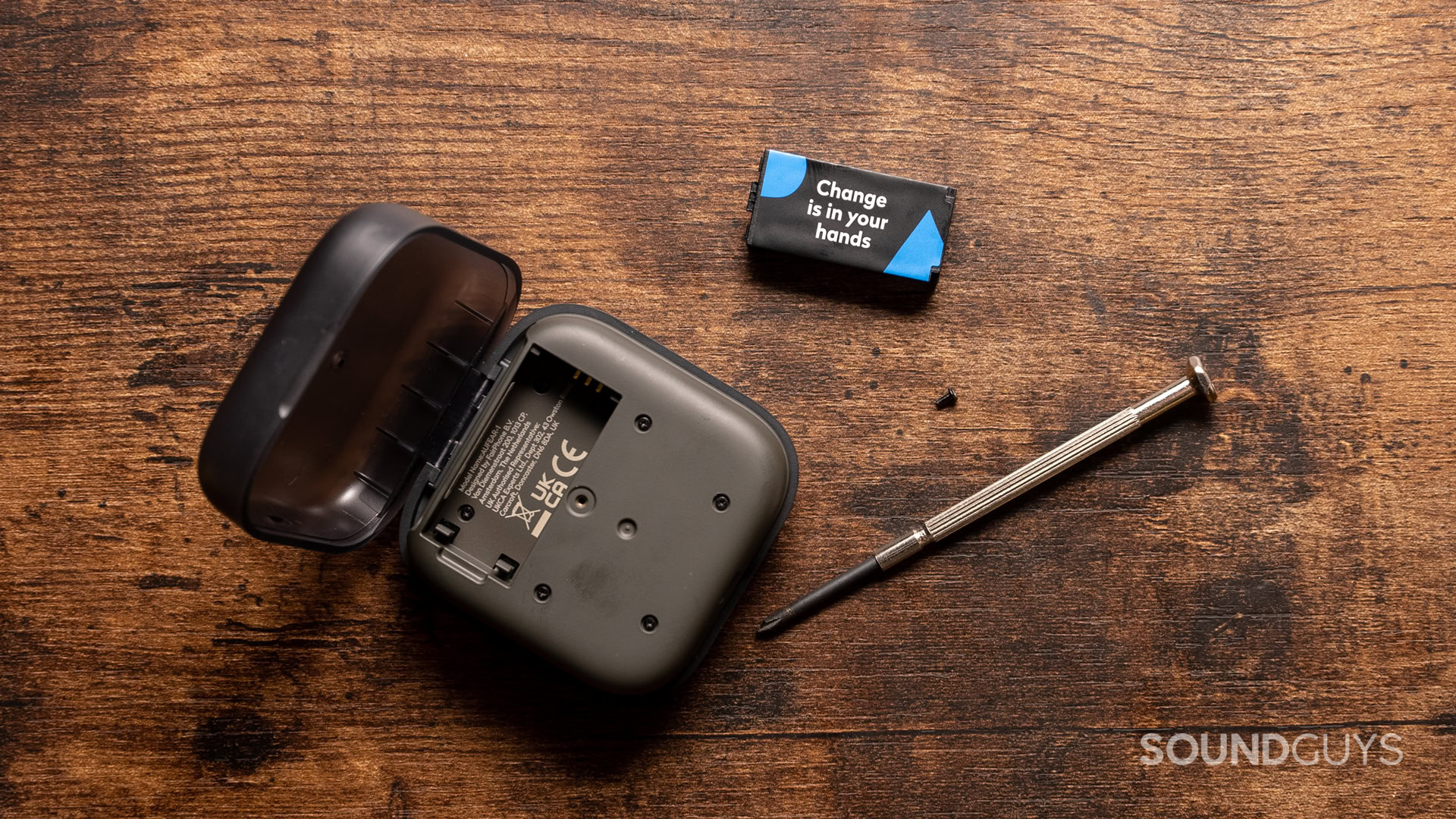
Headphones with replaceable batteries are still relatively rare. Nevertheless, it’s becoming increasingly important as eco-conscious consumers and manufacturers strive for more environmentally friendly listening. Understanding the following key factors will help you pick the best headphones for battery life.
On- and over-ear headphones last longer than earbuds
Regarding battery capacity, size really does matter. This is because, on average, larger batteries have a higher energy capacity than smaller ones, allowing them to store and discharge more energy before running out of juice. So, larger headphones, such as on- and over-ear headphones, can generally accommodate larger batteries that hold more charge than earbuds. For example, the Sony WH-1000XM6 last 27 hours and 42 minutes longer per charge than the Sony WF-1000XM5 buds. Likewise, the Apple AirPods Max last approximately 15 hours and 17 minutes longer per charge than the AirPods Pro 2. This is because the AirPods Max have a battery capacity that is roughly ten times larger than the AirPods Pro 2.
Official battery specs can be misleading
We often find that our standardized battery test results do not correspond with headphone manufacturers’ official battery specs. This is likely because, unlike our SoundGuys tests, each company measures battery life differently. For example, Apple determined the AirPods Max’s official battery life by pairing the headphones with an iPhone 16 Pro Max, streaming a varied music playlist at 256Kb/s with the AAC codec, setting the listening volume to 50%, enabling ANC, and setting spatial audio to fixed. Conversely, Bose concluded the battery life of the QuietComfort Ultra Headphones by streaming a variety of music tracks using A2DP Bluetooth at RSSI signal strength of 75 dBm, setting playback loudness to 75 dB, adjusting the 3-band EQ to zero, listening in Quiet Mode (full noise cancellation), and with Immersive Audio switched off. These varied testing methods make it difficult to compare official battery specs between companies.
Battery life degrades over time
If you’ve frequently used a battery-powered device over several years, chances are you’ve noticed that it no longer holds as much charge as it used to. This is because lithium-ion (Li-ion) cells have internal chemical components that degrade over time with repeated charge cycles. In the long term, batteries often suffer structural damage to their electrode materials. This can slow the flow or reduce the number of lithium ions the battery can hold once damaged. Common habits, such as overnight charging, leaving headphones in the sun, and using devices while they charge, can accelerate these reactions. We’ve created a guide to help you mitigate these issues and prolong the lifespan of your headphones.
Your usage is the arbiter of how long your headphones will last
Using your headphones on your daily commute to work will likely require more battery life compared to listening casually on the weekend. This is because, to block out subway noise, many commuters stream with ANC enabled and volume set high. This consumes significantly more battery capacity than listening with ANC switched off and at low volume. Many commuters also enjoy listening wirelessly, which is substantially more power-hungry than wired listening. Spatial audio also consumes more battery life than streaming stereo music, as does Bluetooth Multipoint connectivity. Listening in warmer climates will also degrade your headphones’ battery life faster than listening in moderate temperatures. Consequently, we recommend reading the above guide to learn more about healthy battery hygiene.
Hi-Res Bluetooth codecs consume more battery than Low-Res ones
Like listening with ANC, streaming music via Hi-Res Bluetooth codecs consumes more battery life than streaming with Low-Res ones. For example, the LDAC, aptX HD, and LHDC codecs deliver superior sound quality by preserving more of the original audio data. However, they also require a greater power draw from the headphones because of the increased processing and transmission requirements. In simple terms, the Bluetooth transmitter, Bluetooth receiver, and built-in digital-to-analog converter (DAC) work harder to process higher bitrates. Subsequently, you can stream music via the SBC or LC3 Bluetooth codecs to save battery life. An article written by Robin W. of Soniclever states that the LC3 codec draws up to 30% less power at the same perceived audio quality compared to SBC.
How we test the best headphones for battery life
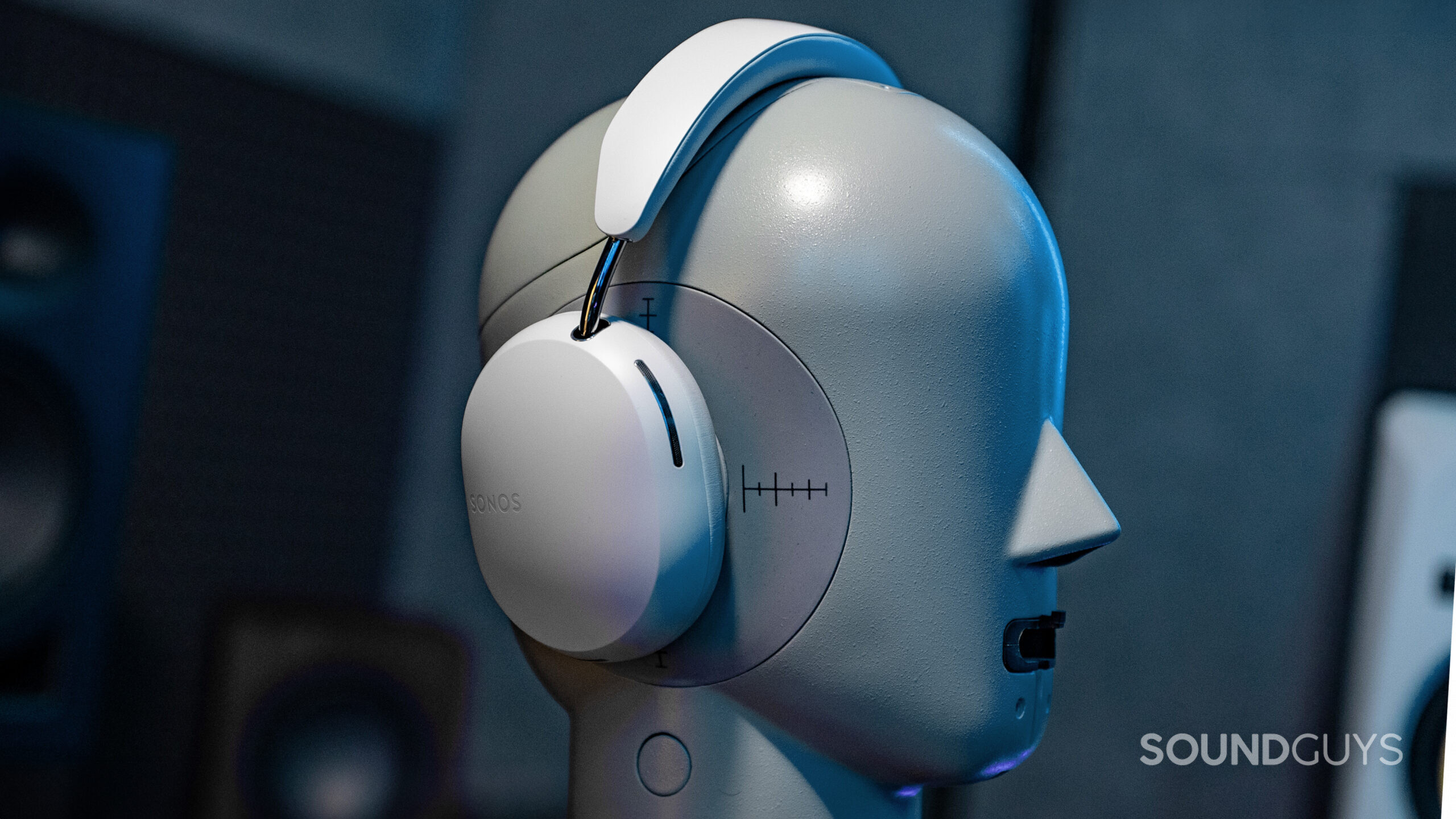
Our testing process evaluates the best headphones for battery life using calibrated measurement equipment and our artificial head in controlled acoustic environments. We test headphone battery life by setting each product to play back music that peaks at 75dB(SPL). This is considered a safe and realistic listening level for most people. Once we record a waveform, it tells us exactly how long the headphones or earbuds last from that point. This constitutes a standardized test because you can compare the figures across our reviews.
We also test battery-related features like ANC performance, transparency mode, fast-charging capabilities, and software functionality. Frequency response measurements are compared against our research-backed target curve and MDAQS algorithm for assessing objective sound quality.
How we choose the best headphones for battery life
Our selection prioritizes headphones that deliver industry-leading battery life. These typically last over 30 hours per charge cycle. However, we also select headphones that offer other desirable flagship features. We evaluate objective battery life alongside practical functions. This includes ANC performance, since most true wireless headphones now provide noise cancellation.
Spatial audio, Hi-Res Bluetooth codecs, and wired audio are essential criteria. We also favor headphones that work across operating systems. We maintain a keen focus on each headphone’s price-to-performance ratio. Likewise, we consider long-term value through replaceable components, firmware support, and durable construction.
Why you should trust SoundGuys
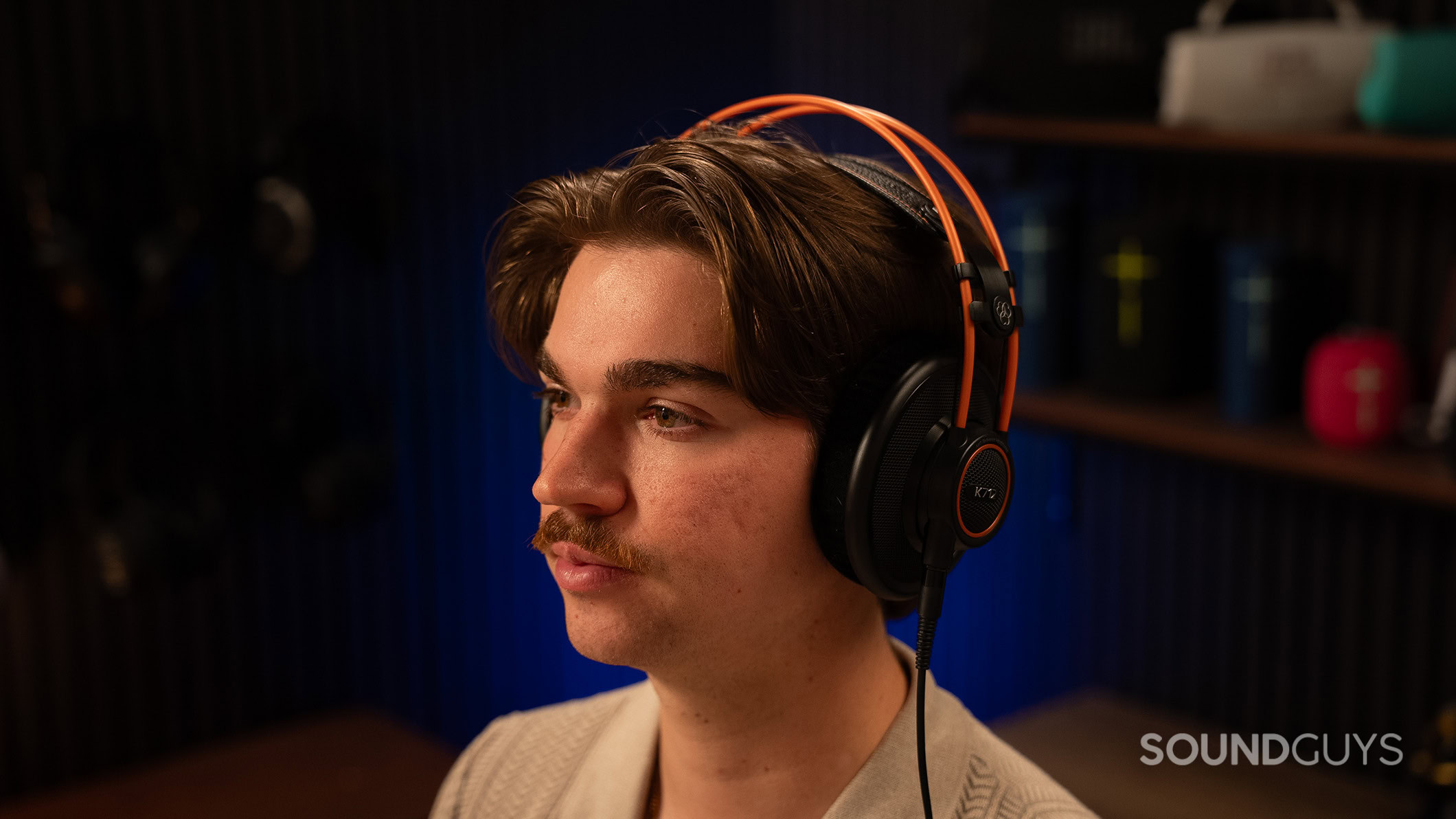
We have invested countless hours of blood, sweat, and tears testing hundreds of headphones and earbuds as soon as they hit the market. We pride ourselves on our ability to show our work and to justify why we selected our picks. SoundGuys takes integrity very seriously.
Everything we recommend is subject to our objective measurements and personal experiences. We want you to enjoy your purchase and leave our site with a better understanding of audio.
Frequently asked questions
According to an article by The Times, Gen Z appears to favor wired headphones over wireless for a combination of reasons. These include sustainability, fashion, and superior audio quality.
The Master & Dynamic MW09 have the longest battery life of any TWS earbuds we have tested so far. These buds lasted 15 hours and 54 minutes when subjected to constant music playback, peaking at 75dB(SPL), in our standardized battery test.
The 1MORE SonoFlow have the longest battery life per charge cycle of all the wireless headphones we have tested so far. These provide 56 hours and 51 minutes of playtime with ANC enabled when subjected to constant music playback, peaking at 75dB(SPL).
The Master & Dynamic MW09 are the only earbuds we have tested so far that last over 12 hours. However, the CMF Buds 2 come close at 10 hours and 22 minutes. Likewise, the Anker Soundcore Liberty 4 NC last 9 hours and 53 minutes with ANC enabled.
Thank you for being part of our community. Read our Comment Policy before posting.
